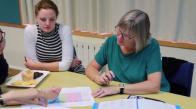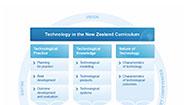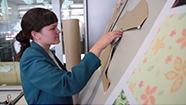Rozeanne Donald shares insight into planning with a purpose.
Live planning
Transcript
Rozeanne Donald: I call planning – it’s either alive or dead. And dead planning is the stuff that one does and sticks in your diary and then you never look at again. And alive planning has a pulse and it actually is used every day. It’s an active action that you take, that you look at your to-do lists, that you change your planning as you go through a project. Some people might have positive experiences with Gantt charts, but I would put them in the category of dead planning because in my experience students have begrudgingly done them, and then stuck them in the back of their diaries and never looked at them. And then when they come back at the end of a project they look at it and say, “Aw, that’s not how the project turned out,” and that really seems to me as just a pointless exercise.
The year that I said no more Gantt charts I found the students looked at me. They were puzzled about this and I said, “ Well, what we’re going to do is we’re going to set milestones and from that we’ll draw up some task lists and we will check those lists everyday. And we’re going to use these milestones to direct our planning. It will change as we go through and we’re not going to do Gantt charts. And a student quite innocently said to me, “So we’re actually going to use the planning that we’re doing?” and I thought at first she was just joking. But then I realised she was serious and it was quite an innocent comment, but it reminded me of how dead and and pointless the tasks that I had set before for planning had been.
Related videos
School-wide programme planning (04:18)
Cheryl Pym explains how collaboration forms the foundation for school-wide planning in technology education.
Reviewing programme planning in years 7–13 (03:23)
At Diocesan School planning focuses on technology components for years 7–10, and establishing scholarship potential in year 13....
Review of curriculum implementation (03:49)
Margaret van Meeuwen explains how a cycle of self-review has enhanced delivery of curriculum.
A technology department with a digital and design focus (04:13)
Julie Clement shares how a design focus has engaged her students.
Resourcing for a digital and design focus (03:18)
Julie Clement considers how resources influence the authentic experiences for her students.





